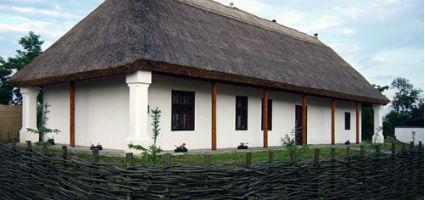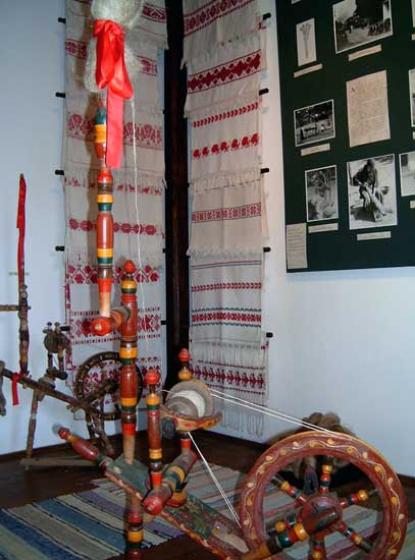2024. November 21. Thursday
Nagy Dezső Cultural center and Village Museum - Cigánd
 |
Address: 3973, Cigánd Fő u. 54.
Phone number: (47) 534-012
E-mail: muvhazcigand@gmail.com
Opening hours: Prior notice via telephone: +36 (47) 534-012, at weekends and on holidays on the phone number +36 (70) 626-8280 as well as the address of the County House anytime.
|
Museum tickets, service costs:
|
Ticket
|
100 HUF
|
The significant textile collection along with the tools and equipment of hemp procession is displayed in the backroom of the house. Most of the textiles have striped patterns, a characteristic pattern of the folk art of Cigánd from the second half of the 19th century until the 1920's. The new type of pleated and rose ornamented textile that became popular in the 1930's and 1040's also shown. From 1958 a domestic industry appeared and revived folk-art in Cigánd.

When the cooperative farm was founded, hemp procession had ceased to be practiced. However, the tools and equipment of procession could still be found in the village. The labor processes, however, were only known by the elderly. We have documents that state that hemp and flax production was common in the village.
The textile from Cigánd and the Bodrog area were made known by Gönyey Sándor who published a work on the topic in 1924. Later the teacher of the village Kántor Mihály popularized this branch of folk art. A meeting of teachers was held in Cigánd following the request of Kántor Mihály. He showed the textile made in the village at the time of the meeting. He invited three important ethnographers Györffy Istvánt, Szendrey Zsigmondot és Gönyey Sándor too.
The National Association of Hungarian Women helped to have the material displayed at exhibitions around the country and sometimes even abroad. Commissions arrived soon and the textile became a sought after product on the market.

When the cooperative farm was founded, hemp procession had ceased to be practiced. However, the tools and equipment of procession could still be found in the village. The labor processes, however, were only known by the elderly. We have documents that state that hemp and flax production was common in the village.
The textile from Cigánd and the Bodrog area were made known by Gönyey Sándor who published a work on the topic in 1924. Later the teacher of the village Kántor Mihály popularized this branch of folk art. A meeting of teachers was held in Cigánd following the request of Kántor Mihály. He showed the textile made in the village at the time of the meeting. He invited three important ethnographers Györffy Istvánt, Szendrey Zsigmondot és Gönyey Sándor too.
The National Association of Hungarian Women helped to have the material displayed at exhibitions around the country and sometimes even abroad. Commissions arrived soon and the textile became a sought after product on the market.
